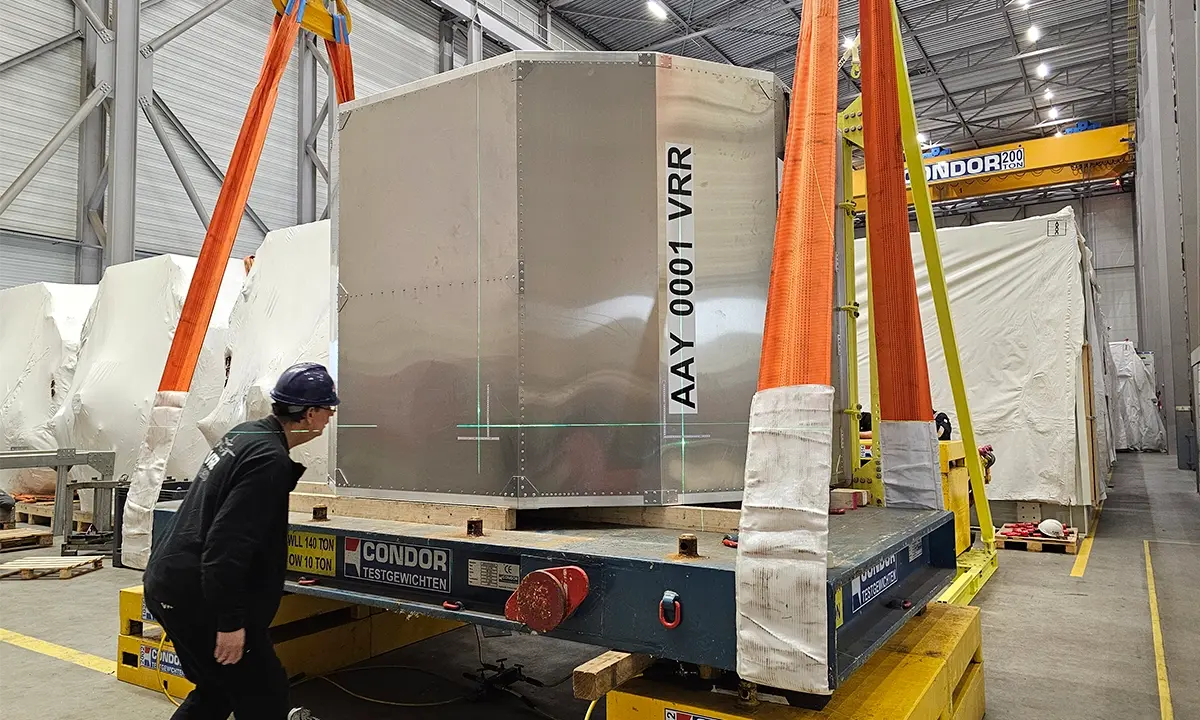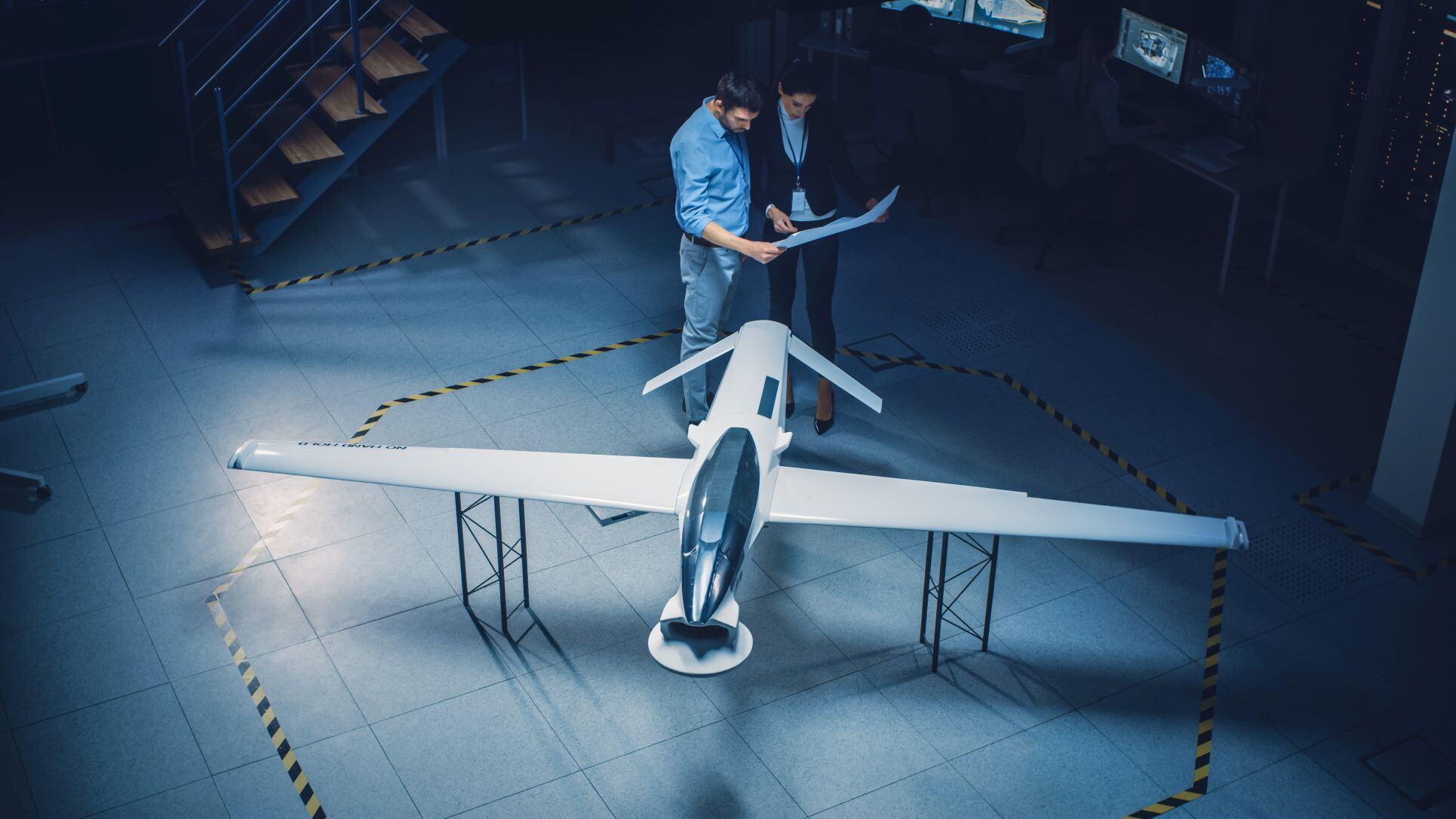At VRR, we go all out to build ULDs that help customers meet tomorrow’s challenges. So, thinking about how we’ll be transporting air cargo in years to come is part and parcel of what we do. It helps us to innovate in collaboration with our partners. This is the second of a series of articles looking at all kinds of future mobility.
Freight transportation is the backbone of the global economy, moving countless tons of goods across countries and continents every year. It’s an intricate web that relies on well-established means of transport.
However, trends in mobility are reshaping the logistical landscape at an astonishing pace. Initiatives such as carbon neutrality and automation are redefining the industry, while innovative concepts like hyperloop and autonomous cargo drones promise a future that puts efficiency and sustainability front and centre.
All this makes it an extraordinary time to work in the mobility industry, so let’s take a closer look at how we currently transport freight and the futuristic modes of transport on the freight horizon.
6 means of freight transportation
The way we currently transport freight domestically and internationally can be broken down into six broad areas:
- Freight transportation by road uses trucks, semi-trailers, vans and other heavy goods vehicles to move goods from one place to another for versatile, accessible and last-mile delivery. It is fast and flexible, but capacity per vehicle is limited. However, it can help carriers avoid transhipment on many routes.
- Rail freight transportation relies on trains and tracks, offering efficient long-distance, over-land transport with large capacity but limited accessibility. For large shipments, it has a much lower cost-per-ton-mile than road freight. However, it’s not a door-to-door solution.
- Water-based freight transport utilises ships and boats on oceans, rivers and canals, providing cost-effective transport for bulky cargo but slower transit times. Sometimes, sea freight is the only option for moving large and heavy goods between continents.
- Air freight transportation uses aeroplanes for fast and global cargo delivery. Ideal for time-sensitive goods travelling long distances, but often comes at a higher cost, especially for special cargo. Transporters can use dedicated freighter planes or passenger planes with “belly” capacity.
- Pipeline freight transport involves using underground or above-ground pipes for transporting liquids, gases and slurries efficiently, safely and with minimal environmental impact. They are a crucial part of infrastructure in most countries, but they’re not new. They’ve been used to transport oil and gas since the nineteenth century.
- Tube freight transportation envisions unmanned, fully automated capsules moving cargo through enclosed tubes between terminals, offering potential efficiency benefits in highly congested areas. Still at the conceptual stage, it has enormous promise. However, significant resources and R&D are needed to create a functional and economically feasible prototype system for the future.
Current trends in mobility
Road, rail, water and air may be traditional means of transportation, but that doesn’t make them immune from technological advances. Numerous mobility trends are emerging that promise to significantly improve the way we move our cargo from A to B. Just take a look at these examples:
- Carbon neutralisation: The transport sector is a major CO2 emitter, but emission-reduction targets and public pressure are motivating shippers and their carriers to play a role in accelerating decarbonisation. Approaches include replacing vehicles with greener models and using carbon-efficient fuels such as ethanol and biodiesel. The move towards SAF (sustainable aviation fuel) for planes and HVO (hydrotreated vegetable oil) for diesel engines is picking up pace. However, the uptake in hydrogen fuel cells remains limited until the processes that make them are more environmentally friendly.
- Electrification: The need to become less dependent on fuel and use renewable energy sources for electricity are inspiring many innovations in electric drive solutions. The adoption of private electric vehicles (EVs) is growing rapidly, but commercial fleet electrification is facing several challenges, from battery performance and charging infrastructure to software integration and driver retraining. However, emerging electric vehicle technology and government incentive programs for medium or heavy-duty vehicles (MHDV) are starting to reduce those barriers.
- Intermodal transport: Using the most suitable option for each leg of a consignment’s journey is nothing new. Yet intermodal transportation is a growing trend as logistics companies focus on cutting costs and improving efficiencies. According to a recent report, the intermodal freight transportation market is set to grow by over $50 million between 2022 and 2026. More free trade agreements, increasing automation, smart intermodal solutions and greener technology are all helping to grow this sector.
- Big data analytics: Cash may be king, but big data is vying for the throne. Big data analytics is much more powerful than traditional business intelligence tools. It involves collecting a variety of data from multiple sources (such as GPS and vehicle data sensors), then putting it through machine-learning-based algorithms. For the transport industry, the result is total end-to-end trip information, which enables carriers to enhance load factors, identify bottlenecks, increase flexibility and reduce fuel consumption.
- Automation: The recent increase in automation in shipping and logistics is helping to remove many logistical restraints, such as working limits, staff shortages and asset availability. It’s not yet mainstream, but automation is already shaping the sector. The rising popularity of automation technologies, such as autonomous guided vehicles (AGVs), pick-and-place robots, automated pallet-handling systems and automated quality control systems, is proof of that.
Futuristic modes of transport
The current trends in mobility will certainly impact freight transportation in the short-to-near term (2023 to 2030). These are the predictions:
Road: Trucks will become autonomous and electric or use more eco-friendly fuel
Rail: Trains will become faster, timetables more dynamic and hubs better connected
Water: Ships will become faster, more fuel-efficient and less polluting per kilo of cargo
Air: Planes will become faster, more fuel-efficient and less polluting per kilo of cargo
The emphasis for each mode of transport is efficiency and sustainability. We’ve listed below the most significant changes that are underway. Most still have a long way to go, but some are already a commercial reality:
- Maglev trains: Dubbed the next generation of high-speed railways, Maglev trains promise to transport goods and people at twice the average speed of conventional trains. The technology is based on a passive magnetic levitation train operating on existing railway tracks at speeds up to 550 kph (340 mph).
- Autonomous trucks: A shortage of long-distance drivers in the US and Europe is encouraging some companies to explore the possibilities of self-driving rigs. The technology is still being developed, but proponents believe autonomous truck fleets will be commonplace in just a few years.
- Smart roads: These use advanced information technologies, such as cloud computing and AI, to improve road safety and traffic management. For example, sensors and monitors can warn drivers of accidents or road damage. In the future, they could help autonomous vehicles expand their situational awareness.
- Hyperloop: Sometimes called the 5th mode of transport, this is an ultra-high-speed ground transportation system for passengers and cargo. Still a concept, several companies are racing to become the first to launch a mass-scale hyperloop system. Most expect their systems to be ready by the end of this decade.
- Autonomous cargo drones: Also known as unmanned aircraft systems, delivery drones are becoming increasingly popular for making last-mile deliveries and reaching locations in remote areas and harsh terrains. Prominent logistic companies like Amazon, UPS, DHL and Walmart have already incorporated drone delivery services into their offerings.
- Hydrogen-propelled aircraft: Airbus is aiming to produce the world’s first zero-emission aircraft by 2035. Its ZEROe concepts are powered by hydrogen combustion through modified gas turbine engines and use liquid hydrogen as fuel for combustion with oxygen.
Read more about the new generation of jetliners in the first article of this series: Future Aircraft and the Practical Impact on Air Cargo Transportation.
How transportation will change in the future
The scale and pace of technological change in the mobility industry are almost overwhelming, especially when taking a helicopter view. So, let’s zoom in on a specific example to consider what freight transportation may look like in the near future:

This typical use-case scenario may be futuristic, but many of these technologies are already being used to transform freight transportation as we know it. The future of freight transport is much closer than we think.
Final thoughts
As an innovator in the air cargo industry, we love to keep track of all new modes of transport. Hyperloop, in particular, has grabbed our attention. Could this have an impact on shorter flight and truck routes? After all, why fly or drive your freight from Rotterdam to Paris if you can move it between logistics centres at 750 mph and use less energy at the same time.
Naturally, the hyperloop has to become a viable reality before it can revolutionise freight transportation, so we will return to this work-in-progress in a future article. In the meantime, with increasingly more freight trips becoming intermodal, we’ll continue to focus on making our cargo containers (ULDs) intermodal.
Subscribe to our newsletter
Find this article inspirational? Subscribe to our newsletter and be the first to receive new articles!

.png)


.webp)
